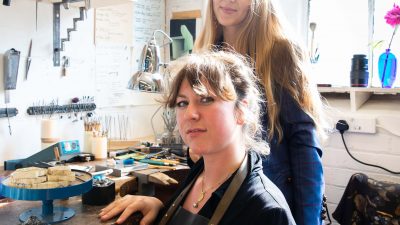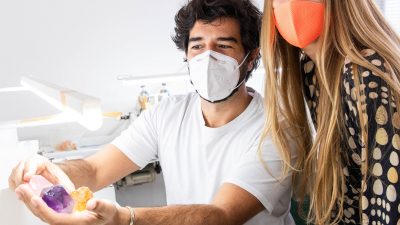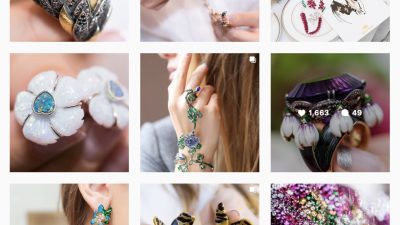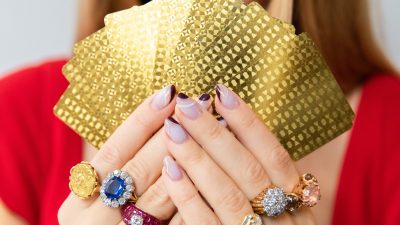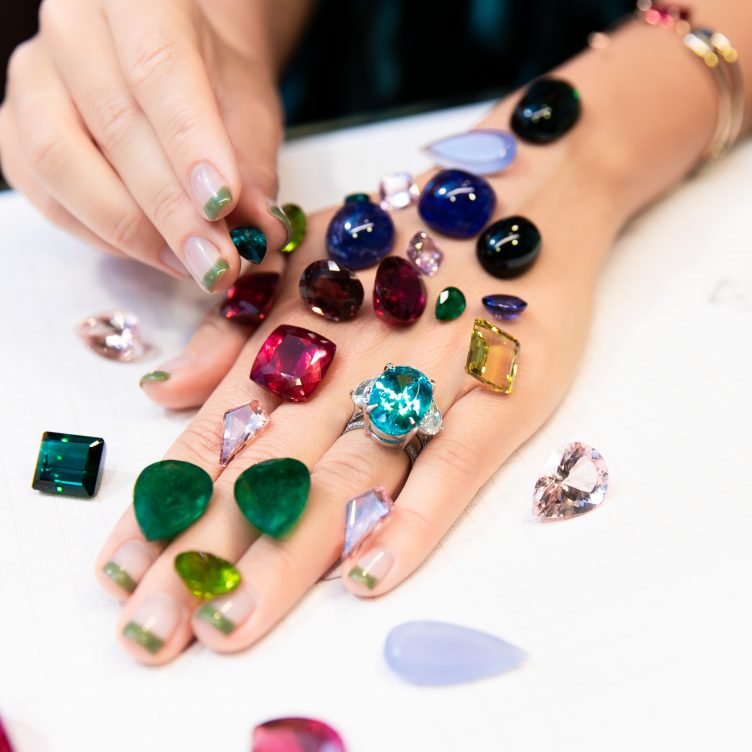- Ara Vartanian, Bali, Brazil, Designers, H.Stern, Rio de Janeiro, Sao Paulo, Silvia Furmanovich, Travelling
EVERYTHING YOU NEED KNOW ABOUT BRAZILIAN GEMSTONES
Our new series launches today. And of course I have decided to dedicate this week to GEMOLOGY. You might wonder what gemstones are found in Brazil and what rare brazilian gemstones! @GEMOLOGUE stands for “dialogue about gems”, so I don’t think I could pick a more appropriate topic, not only because Brazil is famous for it is vibrant gemstones, but because I have found myself merging with this beautiful country, particularly the past couple of months. I know many of you want to learn and discover more about gemstones, and there is no better place for me to be sharing and showcasing gemstones than BRAZIL. So I have spent time with jewellery designers, gemstone dealers, and gemologists; I have visited gem laboratories and lapidaries; I have collected and put everything into this series for you to savour. Today it’s all about the wondrous soul and body of the gemstones of Brazil
View this post on Instagram
IMPERIAL TOPAZ
Considering the national gemstone of Brazil is the heavenly topaz, it makes sense for me to start my gemstone journey with this dreamy gem! Can you guess what my most favourite quality about this gem is?! Of course, its magical vivid purplish pink colour. This hue of topaz is not as popular as its blue brother in Brazil but, I am so attracted and captivated by its beauty. Topaz has been recovered from Ouro Preto mines in Minas Gerais for over 200 years, with the first discoveries recorded in 1768, when the Portuguese court of King Joseph I marked the discovery of the gem in their Brazilian colony.
View this post on Instagram
GEM FACTS
- Topaz with the red, pink, or orangey yellow colour component is extremely rare and highly valued
- One of the most sought-after colours is known as “Imperial” topaz, which most in the trade consider a medium reddish-orange to orange-red
- Topaz crystals are usually columnar and cut as oval or pear shapes to improve their yield
View this post on Instagram
TOURMALINE
Although the beauty of tourmaline gems can be found throughout Brazil, the main mining hub is in Minas Gerais, where tourmaline can be found in various colours from orange, yellow, green, blue, and violet. I have read that in the history of gemstones, tourmaline is a latter-day Cinderella. Whereas aquamarine was known to the Egyptians over 5,000 years ago, tourmaline was not discovered until the mid-1500s in Brazil, and even then, it was mistakenly heralded as emerald.
GEM FACTS
- Tourmaline Brazilian gemstones were not discovered until 1554 when Francisco Spinoza’s expedition discovers the beauty of “Brazilian emerald”: the first recorded green tourmaline crystal.
- Only in 1793 tourmaline was recognized as a distinct mineral species. For hundreds of years this heavenly gem was mistakenly heralded as emerald .
- If you are looking for a specific Brazilian gemstone, please send me a direct message and all of your gemstone dreams will come true, I promise.
View this post on Instagram
OPAL
The mirror to a jewel’s soul! I have recently discovered that amongst all the other heavenly gems Brazil births, opal is one of them! How much more beauty is hidden in this marvellous country? I surely cannot wait to see what else it’s in store for me! This Antonio Bernardo opal ring is an infinity of emotion, personality and elegance. A universe of dreamy colours and rainbow pools.
View this post on Instagram
RUBELLITE
View this post on Instagram
GEM FACTS
- Rubellite belongs to the bright and colourful family of tourmalines it is in fact a super-gorgeous pink tourmaline
- Because of its deep rich colour, varying from deep pinkish-red to slightly purplish red, this gem is often compared to the magnificent ruby
View this post on Instagram
EMERALD
I was caught talking to Ara Vartanian about his ”The Future is Brilliant” initiative and I cannot agree more! Contemporary thinking about luxury needs to evolve in line with the challenges of our times, and our understanding of luxury needs to be renewed in order to reach new milestones. We need to value our natural treasures and our unmistakable craftsmanship by improving the quality of life of artisan communities throughout our beloved Brazil.
Look at this gorgeous sustainable sourced Brazilian emeralds from Belmont Mine. PERFECTION! The Belmont property was originally a cattle ranch and remains one today. But since 1978, Belmont has also operated a well-known emerald mine. It is managed by Marcelo Ribeiro, whose grandfather discovered emeralds on the ranch by accident! Could you imagine discovering an emerald mine in your back garden?
GEM FACT
Did you know the geography of emeralds defines the price more than the beauty of the actual stones? What I find even more surprising is that Brazil lighter shade emeralds are more in trend than the juicy dark green emeralds I alway dream of. Whether it is determined by the cheaper price point or by simply a colour preference… it is a mystery to me!
View this post on Instagram
AMETHYST
Amethyst day in amethyst heaven! Did you enjoy the GEMOLOGUE amethyst series? Click the link in bio to learn everything there is know about amethysts! Sometimes I wish I could bathe in green tea and gem stones powder, a bit like magical energy charged bath salts! (weird I know, don’t ask me why!) This gem would be perfect, especially with its calming and tranquil energy!
Amethysts were as expensive as rubies and emeralds until, in the 19th Century, Brazil’s largest amethyst deposits were discovered. Today, as the most valued quartz variety, amethyst is such a popular and coveted stone amongst designers and mass-market jewellery producers! The perfect gemstone for the perfect jewel!
View this post on Instagram
TOPAZ
From a rough topaz to faceted stone. Swipe on GEMOLOGUE Instagram to have a look and let me know in the comments, which stage of a topaz do you prefer?
I have already introduced you to the stunning imperial topaz above, and surprisingly, I have learned that in Brazil’s jewellery world, blue topaz is favoured over other topaz colours. In nature, topaz is most commonly colourless, and naturally strong blue gems are extremely rare. Although this beautiful dreamy stone has an exceptionally wide colour range, It is important to know that colourless topaz is plentiful, and it is often treated to give it a blue colour.Irradiating colourless topaz with electrons at an energy of 10 million electron volts creates a sky blue colour. Between us, I do not dream in blue topaz, but I have experienced true magic being part of this gemstone transformation! Stay tuned for an ultra interesting IGTV video from a lapidary in Rio.
View this post on Instagram
KUNZITE
The beautiful kunzite is the pink-to-violet variety of the mineral spodumene and it gets its delicate colour from trace amounts of manganese. I adore the soft pastel pink kunzite but I have to say to intense violet is so absolutely dreamy. I have always thought kunzite is such a magnificent and versatile stone, it is so strange to think that in spite of its rarity and beauty, this stone still suffers somewhat from a lack of consumer recognition… but to every downside, there is an upside!! Due to being still a relatively unknown gem, kunzite jewels are quite affordable, especially when compared to other fellow gemstones! Do you know what that means? More kunzite for everyone!
GEM FACTS
- The gem was only recognised as a unique variety of spodumene around 1902 and it was named after pioneering gemologist George Frederick Kunz.
- Kunzite can be irradiated and then heat-treated to enhance its colour. Both treated and natural colour in kunzite can fade with exposure to heat and bright light.
View this post on Instagram
PARAIBA TOURMALINE
Oh how I wish my eyes were the colour of my favourite gem! And as we are talking about eyes… I have been looking for a new adventure, shall I visit a paraiba tourmaline mine in Brazil? No doubt, there is no tourmaline stone as famous or treasured as the paraíba tourmaline. This unmistakable stone always enchants me with its vivid colours leaving no space for rivals or comparison. The perfect mixture of electric blue and vibrant green, this intense and dreamy colour of this gemstone is the result of trace impurities of copper…Talk about genetics. Every time I see this gem I feel such a majestic and pure connection to it, I almost think I was born in the wrong month.
The stunning paraíbas (also called cuprian tourmalines) are recovered from gem deposits in Brazil, Nigeria, and Mozambique – Did you know prices are partially based on the geographic origin of a stone? This is why determining the provenance of the gem it’s an important aspect when it comes to giving the stone its value! Brazilian Paraiba for example, is valued at a higher price per carat than its African counterpart, can you guess why?
View this post on Instagram
DENDRITIC QUARTZ
“The imagination of nature is far, far greater than the imagination of man” – I don’t think I could have described this stone any better. This beautiful variety of quartz is called Dendritic Quartz and it contains fern-like inclusions of iron, manganese, hematite and other metallic oxides. The word “Dendrite” comes from the Greek word “Dendron” meaning tree, and the patterns within this masterpiece of nature give away why. Dendritic quartz is typically clear in colour with brown, black and yellow to red tree-like inclusions, which turn any jewel into a wearable art scene of nature. I think I have officially found a new collectable jewel, how interesting and amazing is this? NATURE, forever my favourite jewellery designer!
View this post on Instagram
DIAMOND
Whilst Brazil is not as recognized for its diamond production as widely as it is for the production of coloured gemstones in this century, diamonds were discovered in the early 1700s by artisanal miners looking for gold along the banks of the Jequitinhonha River, in the state of Minas Gerais. Nowadays stunning diamonds and coloured diamonds can be found in Brazil’s riverbeds with the precious help of garimpeiros/independent miners, anyone fancies a trip by the river?
View this post on Instagram
CITRINE
Citrine is the transparent, pale yellow to brownish orange variety of quartz and it is recognised as one of the most popular and frequently purchased yellow gemstones. I adore citrine’s warm deep golden hue, it makes any jewel look so elegant and charming! Also, the fact that Citrine is attributed with two goddesses ( Demeter, the Greek goddess of harvest who is associated with productivity and Sekhmet, the Egyptian goddess of war who is associated with power) makes this stone a one of a kind gem.
GEM FACTS
- Citrine is widely used in China during gemstone healing sessions to produce feelings and thoughts of abundance
- According to Chinese legends this golden-hued stone is “The Stone of Success,” and it should only be given to generous people – This tradition in fact goes back to the times of ancient Chinese emperors, which appreciated and wore citrine stones for their ability to increase intellectual capabilities and broaden the mind.
View this post on Instagram
GREEN BERYL
This delicate and soulful gem is associated with the horoscope sign of Scorpio. The wonderful beryl family includes some of the most popular and expensive gemstones, all coloured by nature as its own very personal colouring book. Chemically pure beryl is colourless, trace elements give life to various hues of green, blue and pink/red. The most important variety of beryl is green emerald (coloured by chromium or vanadium), followed by blue aquamarine and yellow heliodor (both coloured by iron) and pink morganite (coloured by manganese).
GEM FACTS
- Only the pale green shade of beryl is referred to as Green Beryl.
- Naturally, occurring Emeralds are generally heavily included which makes them less resistant to breakage or stretch. In comparison, Green Beryls are very less included.
- Emeralds are very rare to be found as compared to Green Beryl.
View this post on Instagram
AQUAMARINE
Have you ever heard of the gemstone master set? I feel very fortunate and spoiled by playing with H.Stern master set of aquamarine! This is what went down at my visit to an in-house Gemological Lab in Rio. I remember my fascination with master sets started back in my GIA days in NYC – “working master sets” of 10 stones to grade the most commonly submitted diamonds, which fall between D and N. When it comes to diamond colour grading, most of us have difficulty distinguishing between two or even three full grades, the same applies to gemstones. In 1958 an in-house Gemological Lab was set up at the H.Stern headquarters in Rio for the analysis and classification of precious stones and abides by the criteria established by the Gemological Institute of America, ensuring the unquestionable quality of each gem used in the brand’s jewellery.
View this post on Instagram
INDICOLITE
Have you ever heard of Indicolite? You might wonder, what is the rarest tourmaline? This rare gemstone forms part of the group of Tourmalines known as Elbaite. It is similar in colour to that of London Blue Topaz: Indicolite’s colour, however, is incredibly rare and it’s created purely by Mother Nature. Tourmalines highly variable chemical composition gives rise to the wonderful range of majestic gemstones like verdelite (green), indicolite (blue) and rubellite (red). Of course, some of the finest Indicolite in the world is found in Minas Gerais. Who else could create such a treasured jewel out of this unique stone but Silvia Furmanovich? These green bamboo earrings with indicolite and diamonds are the perfect balance of sparkle, texture, character and elegance. This statement jewel has me dreaming of summer nights by the seaside, having a drink and a laugh with my beloved friends and family…oh, not long! For now, I will enjoy wearing these gorgeous indicolite dreams whilst strolling through my Sao Paolo home!
View this post on Instagram
I am extremely happy to announce that my new jewelry book – GEMOLOGUE: Street Jewellery Styles & Styling Tips – is now on Amazon. I’m so excited. It’s the first book of its kind solely dedicated to jewellery.
You can sign up for GEMOLOGUE newsletter below and I also share jewellery on Instagram, Twitter, Facebook
GEMOLOGUE jewelry blog by Liza Urla is a celebration of fine, fashion and vintage jewellery featuring talented jewellery designers, trendy urban street style, exclusive interviews and rare jewellery reviews. This jewellery blog’s goal is to encourage and educate about jewellery online in a fresh and original fashion to inspire women and men across the globe in a fashion and travelling context.
Jewellery blogger, writer Liza Urla, the founder of GEMOLOGUE, is a London-based and NYC-educated gemologist, who has travelled to and lived in many countries. She is now one of the most influential digital jewellery tastemakers. Her jewellery influence has been acknowledged by Financial Times, The New York Times, Vogue and Harper’s Bazaar.
*Styling and Art Direction by Liza Urla. All photos belong to GEM Kreatives for GEMOLOGUE.
Material on this website may not be copied, broadcasted or adapted without written consent.

